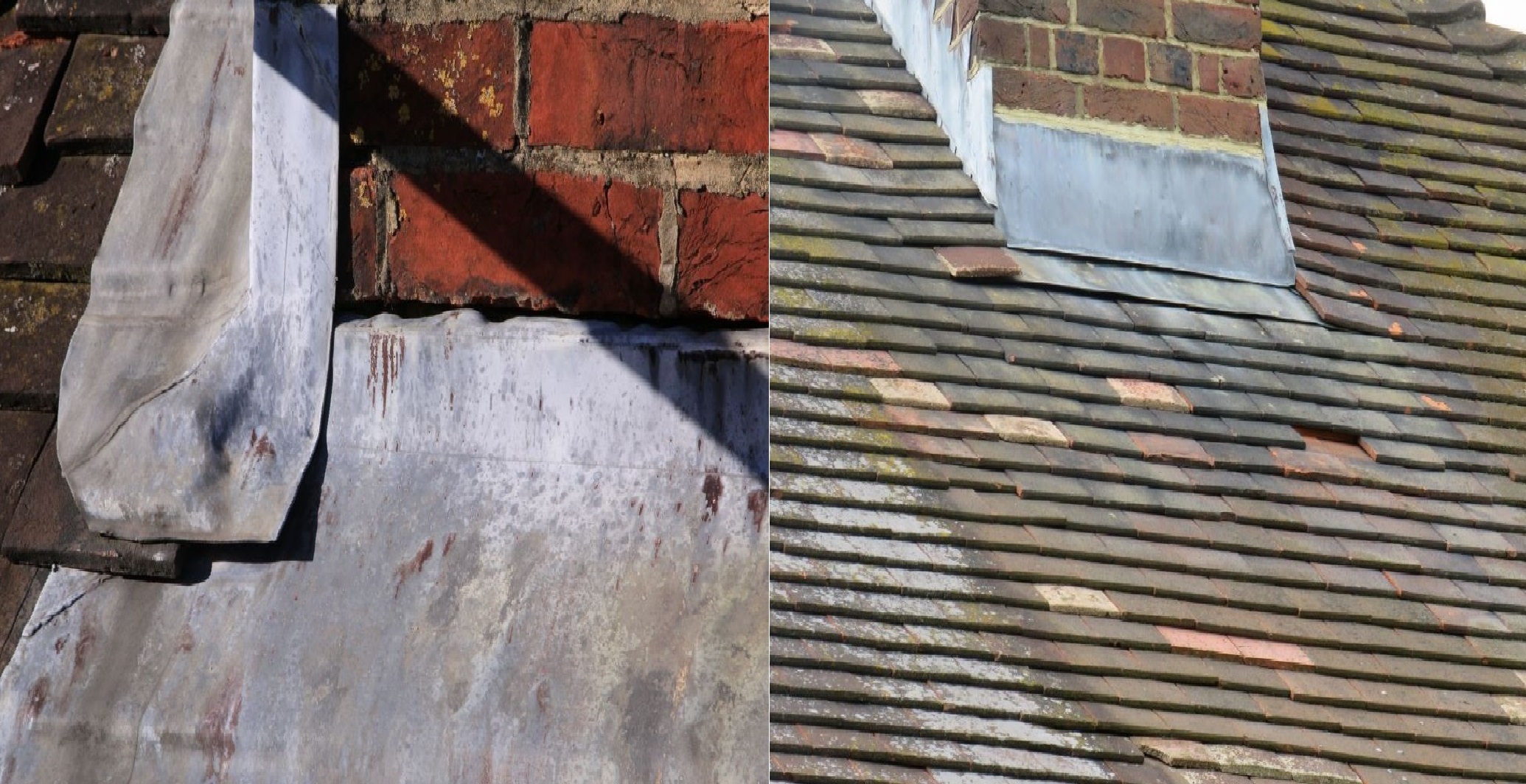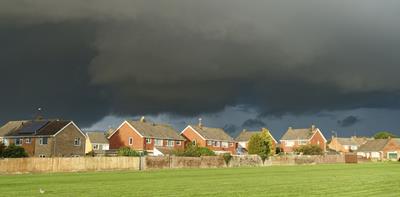
What are the most common reasons roof damage claims are not covered?
As storm season approaches, it’s important to keep your roof in good repair. Regular checks on your roof will help prevent damage and the chance of leaks during bad weather, keeping it in good shape and avoiding any long-term damage.
All insurers exclude ‘wear and tear’ so storm damage may not be covered if the roof hasn’t been maintained adequately. We’ve gathered the most common reasons that roof damage claims are not covered, to help you maintain your home, avoid any issues and prevent damage.
At Ageas we use ‘weathernet’, a weather forecast and monitoring tool for any claim assessments, by a storm, we mean strong winds of over 55mph or damage by extreme rain, snow or hail.
There are suggestions on repairs below, but ensure that you contact a professional to carry out any roof repairs or maintenance.
Roof maintenance
What to check and when
Area |
How often |
|---|---|
|
Chimney Stack |
Once a year and after bad weather. |
|
Lead Flashing |
Once a year and after bad weather. |
|
Roof ‘Valley Area’ Mortar Erosion |
Once a year and after heavy rain. |
|
Tile Damage |
Once a year and after heavy rain. |
|
Nails Weakening in Slate Roofs |
Every 2-3 years. |
|
Sun Damage to Rubber or Felt Roofs |
Once a year, before the summer. |
|
Brittle Roof Panels |
Once a year, after big temperature changes. |
|
Poor Workmanship |
Look at it after any new roofing work and once a year. |
|
Excessive Moss Growth |
Inspect it twice a year, in spring and autumn. |
|
Blocked Gutters or Downpipes |
Clean them twice a year, in spring and autumn, and after heavy leaf fall or storms. |
Your roof maintenance checklist

Left to right: Loose mortar on chimney, Damp patches on internal walls around the chimney area
1. Chimney Stack Issues:
- What’s Wrong: The mortar (the stuff that holds bricks together) around the chimney is breaking down, which can cause leaks and make the chimney unsafe.
- Signs to Look For: Cracks in the mortar, loose bricks, or damp patches inside the house.
- What to Avoid: Don’t ignore small cracks or use the wrong materials to fix it.
- How to fix:
- Repointing: Remove damaged mortar and replace it with new mortar that matches the original.
- Sealant: Apply a waterproof sealant to protect against moisture.
- How Often to Check: Look at it once a year and after bad weather.

Left to right: Lead flashing around the chimney and loose tiles, Lead flashing or metal strips coming loose at chimney area.
2. Lead Flashing Issues:
What’s Wrong: The metal strips (lead flashing) around the chimney or dormer windows on old houses can get damaged and cause leaks. Rust stains or discoloration on or around the flashing can indicate that nails or fasteners are corroding.
- Signs to Look For: Look for orange staining, cracks, or gaps in the metal strips. Also, check for water stains or leaks inside the house near the chimney or dormer windows.
- What to Avoid: Don’t ignore small cracks or use the wrong materials to fix them, as this can make things worse.
-
How to Fix:
- Replacement: Change old metal strips with new ones.
- Sealant: Use a special glue (roofing sealant) to temporarily fix small cracks or gaps until you can replace the metal strips.
- How Often to Check: Check the metal strips at least once a year and after bad weather to make sure they are still in good shape.

3. Roof ‘Valley Area’ Mortar Erosion and Tile Damage:
- What’s Wrong: The Roof ‘Valley area’ is where two parts of the roof meet in a dip, and the mortar can start to wear away. This can lead to leaks, loose and damaged tiles. This area is crucial because it directs rainwater down the roof and into the gutters.
- Signs to Look For: Water stains on the ceiling, loose, damaged, slipped or missing tiles, and gaps in the mortar.
- What to Avoid: Don’t wait too long to fix it or use the wrong type of mortar.
- How to Fix:
- Re-apply Mortar: Remove old mortar and apply a new, weather-resistant mortar.
- Flashing: Ensure proper flashing is installed to direct water away from the valley.
- How Often to Check: Inspect it once a year and after heavy rain.

Missing tiles from slate roof
4. Nails Weakening in Slate Roofs:
-
- What’s Wrong: The nails holding the slate tiles are rusting, making the tiles loose.
- Signs to Look For: Loose or missing tiles, rust on nails, or tiles sliding out of place.
- What to Avoid: Don’t use nails that rust easily or walk on the roof too much.
- How to Fix:
- Replace Rusted Nails: Use stainless steel or copper nails to prevent rust.
- Re-secure Tiles: Ensure all tiles are properly secured to prevent movement.
- How Often to Check: Look at it every 2-3 years and after strong winds.

Damaged brittle felt roof
5. Sun Damage to Rubber or Felt Roofs:
-
- What’s Wrong: The felt on the roof is getting damaged from too much sun.
- Signs to Look For: Cracks in the felt, leaks, or the felt feeling brittle, water puddles where it can gradually leak through
- What to Avoid: Don’t ignore early damage or use cheap felt.
- How to Fix:
- Replace Damaged Felt: Remove and replace any damaged sections with high-quality rubber or felt.
- UV Protection: Consider applying a UV-resistant coating to extend the life of the felt.
- How Often to Check: Inspect it once a year, especially before summer.

Discoloured and cracked plastic roof panel
6. Brittle Plastic Roof Panels:
-
- What’s Wrong: The plastic panels on some roofs become weak and break over time.
- Signs to Look For: Cracks or breaks in the panels, or panels looking cloudy.
- What to Avoid: Don’t use low-quality panels or expose them to harsh chemicals.
- How to Fix:
- Replace Panels: Remove and replace brittle panels with high-quality, UV-resistant materials.
- Regular Cleaning: Clean panels regularly to prevent buildup that can cause damage.
- How Often to Check: Inspect it once a year and after big temperature changes.
7. Poor Workmanship:
-
- What’s Wrong: Problems from bad roofing work.
- Signs to Look For: Uneven tiles, leaks, or gaps.
- What to Avoid: Don’t hire unqualified workers or use cheap materials.
- How to Fix:
- Hire Qualified Professionals: Ensure any repairs or installations are done by certified roofers.
- Inspect Work: After any new roofing work, inspect for quality and adherence to standards.
- How Often to Check: Look at it after any new roofing work and once a year.
Drainage

Overgrown moss on roof tiles
8. Excessive Moss Growth:
-
- What’s Wrong: Moss is growing on the roof, blocking rainwater from draining, especially in older homes.
- Signs to Look For: Green patches on the roof, water pooling, or blocked gutters.
- What to Avoid: Don’t let moss grow too much or use harsh chemicals to remove it.
- How to Fix:
- Gentle Removal: Use a soft brush or moss remover to gently clean the roof.
- Preventive Measures: Install zinc or copper strips along the roof to inhibit moss growth.
- How Often to Check: Inspect it twice a year, in spring and autumn.

Leaking gutter causing damp on wall
9. Blocked Gutters or Downpipes:
-
- What’s Wrong: Gutters or downpipes are clogged or broken, stopping water from draining.
- Signs to Look For: Water overflowing from gutters, plants growing, sagging gutters, broken guttering, cracked drains or water damage on walls.
- What to Avoid: Don’t ignore regular cleaning or use the wrong tools.
- How to Fix:
- Regular Cleaning: Clear gutters and downpipes of debris at least twice a year.
- Install Guards: Consider installing gutter guards to reduce debris buildup.
- How Often to Check: Clean them twice a year, in spring and autumn, and after heavy leaf fall or storms



